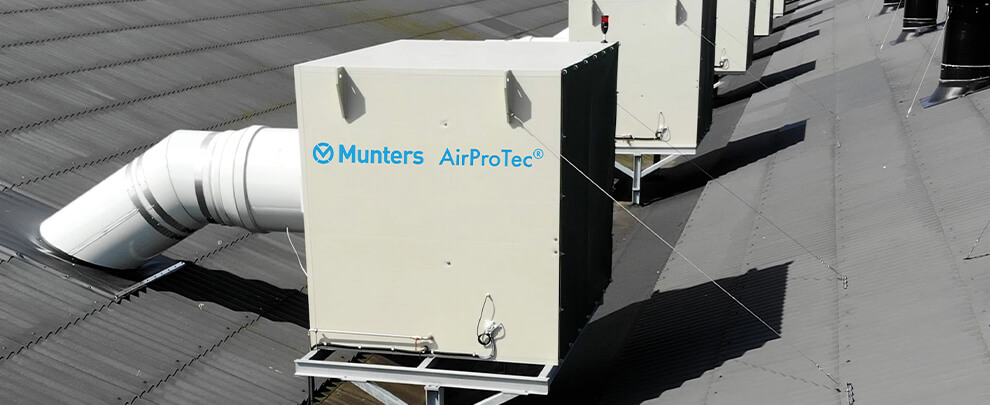Blog
Blog

What are the advantages of filtration systems?
07th September 2023 - News
In order to pig Producers to be successful, one of the main conditions is to keep animals healthy. In order to do that, knowledge about the diseases is crucial. All staff that works with the animals should be able to identify the most common symptoms of the diseases and must be vigilant. A quick identifications and actions, informing management and veterinarians as soon as any signs of diseases occur on the heard allow that the animals receive a quick treatment and reduce the losses.
But prevention, is much better than cure. That’s why biosecurity became a constant topic, and the producers are working on many strategies to reduced contaminations. Improving the health of the animals through preventive actions has a significant impact on consumers’ opinion and has a big impact on the financial results of the production.
Among the relevant diseases, the Airborne diseases have been causing significant problems to the pig producers. Many of the airborne diseases can come from areas that are not in control of the producer, as from animals on other properties, animals from the Wild or vectors that are being transported on roads in the surrounding areas. Those are some of the reasons that turn this subject unique and require special attention from the farmers.
There’re several airborne diseases, causing significant problem to modern pig producers and many of the pathogens can travel across long distances.
Short and intermediate distances up to about 3km
- Actinobacillus pleuropneumoniae.
- Toxigenic Pasteurella multocidia.
- Streptococcus suis.
- Enzootic pneumonia (Mycoplasma).
- Influenza.
- Porcine reproductive and respiratory syndrome (PRRSV) virus.
- Porcine respiratory coronavirus (PRCV).
Relatively long distances >9km
- Aujeszky's disease.
- Foot-and-mouth disease.
Porcine Reproductive and Respiratory Syndrome (PRRSV)
Porcine Reproductive and Respiratory Syndrome Virus (PRRSV) impacts modern pig production worldwide, and continues to be a major economic issue for the swine industry. In the early 1990s an arterivirus, referred to as PRRSV, was determined to be the etiologic agent of this disease.
Studies have estimated the economic impact of this disease to be $664 million per year in the United States. In Germany a study indicate losses of 255 Euro per sow and year (median) . In a Spanish report dating from 2013, losses during 6 months following an outbreak were estimated as being 200 US$ per sow for a farrow-to-finish farm.
Prevention
Until recently, focus of biosecurity activities has been placed on transmissions via sperm or direct contact with infected animals, human being, feed, tools, equipment etc. However, the huge financtial impact airborne deseases have on the productions costs turned the measures to reduce the risk of contamination thru air a topic of interest of all major and profissionalised swine producers.
The technology on equipment and projects may vary and can be used as a system integrating filtration and ventilation. A few alternatives are possible to be applied for protection. Each solution has certain advantages and disadvantages, and some criteria need to be evaluated on a individual project level. Nevertheless, for a secure environment the use of positive pressure inside the barn is the most recomended way to use the filtrations solutions as a biosecurity measure. In comercial barns the air filtration principle that have provem to be more efictiv over time.
For this reason, use of air filters in USA has been going on for a while. They prevent the virus from entering pig stocks in regions with high stocking density. The risk of reinfection seems to be reduced by 80% with these type of fresh air filter systems.
The projects with air filtration commonly also alow to benefit from other air treatments, as cooling for exemple. Complementing biosecurity with animal well-fare thru clime control and result on additional return on investment.
Its important to consider that the project will probably have implications on the air distribution on the barn. Its mandatory take that into consideration. Is needed to calculates and designed to guarantee that the animals will have filtrated air, but also in the right quantity and with the proper airflow for the needed conditions.
Intercept viruses
The concept consists of forcing the air pass on modules mounted equipped with mechanical filter units that, with 98-99% efficiency, trap and thus filter out viruses so that they do not enter the barn.
The filtration consist of, usually , 2 layers of filtration.
- Pre-filter: for filtration of large particles (Protect the main filter, usually MERV 7 - G4)
- Main filter: filter air for small pathogen (MERV 16 – F9 or Higher).
It’s important to evaluate the tipe of filters and be able to monitor the filters during air filtration to assure that the system is working properly and constantly. Is a key factor maintain and excellent seal of the filters with the structure and between Filters.

Gráfico 1: 1. Pre-filter: for filtration of large particles (Protect the main filter, usually MERV 7 - G4)
2. Main filter: filter air for small pathogen (MERV 16 – F9 or Higher).
Summary
Including air Filtration on a swine Farm is an effective biosecurity for controlling airborne diseases. The filtrations has been showing good Return on investments, especialy in fars that routinely have PRRS and for farms in swine dense regions with aditional benefits. The solutions that can be applied on the barns may vary according to its needs , a support from tecnical experts is recomended.






